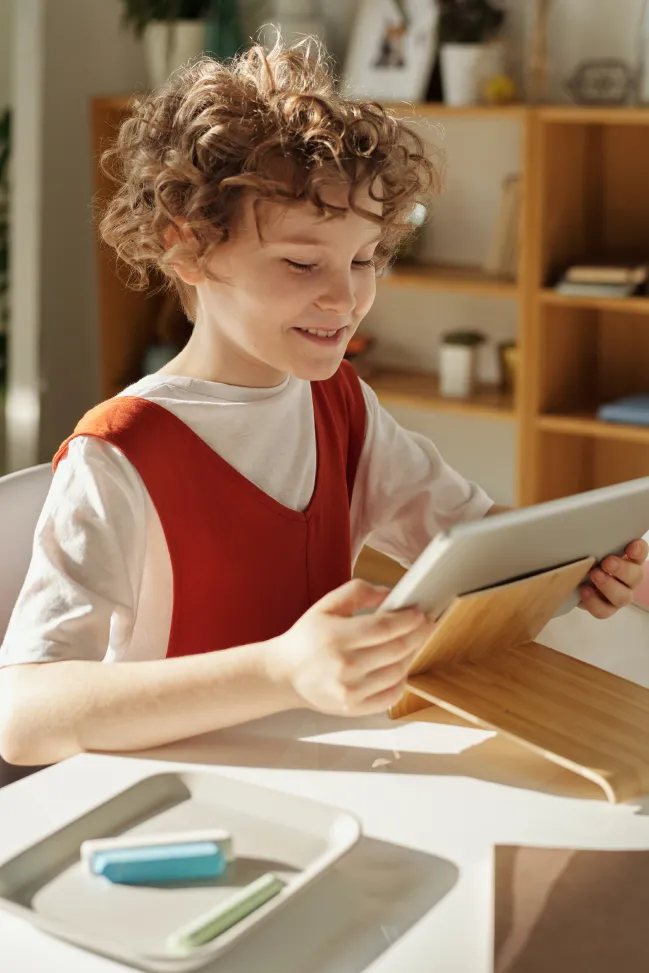
Education is undergoing a paradigm shift, moving away from normative teaching forms and towards adaptive learning. In this new paradigm, learning plans are tailored to the needs of individual students, rather than relying on a one-size-fits-all curriculum. The making of individual learning plans is a monumental task for teachers, but the rapid digitalisation of education is opening new doors. As one of Norway's biggest Education Technology (EdTech) player, Conexus holds many of the cards needed to make adaptive learning a reality.
How will adaptive learning transform the Norwegian education system?
Adaptive learning is not only a new concept in the EdTech industry, but it is also a new way of teaching. In the classroom context, the use of technology is not novel, but using it to automate the creation of learning plans certainly is. From a design perspective, it will be important to build trust between Conexus’ software and teachers. What does adaptive learning look like in the day-to-day workflow of a teacher? How should the rationalisation of automated decisions be disclosed? How can we ensure technology lowers the administrative burden on teachers, rather than raising it?


Teachers take a central role in the transformation to adaptive learning and therefore formed the main subject of the design research. A deep understanding of their motivations, challenges and ways of working provides opportunities for a successful transition to a new system that enables adaptive learning.
By employing the “expert involvement” process in design, we allowed teachers to use their own expertise and experience to envision a future. The designer’s role is simply to facilitate creativity and to translate this into concepts and prototypes.
This process undergoes several iterations of the same steps. The first half (steps 1-2-3) takes place as a workshop between the teachers and designers. Based on a set of prompts, teachers are encouraged to think about adaptive learning and how this might take shape in the future. What challenges do they foresee? How could these be circumvented, assuming technological feasibility plays no role? How does the role of a teacher change? Exploring the context of adaptive learning provides teachers with the insight—and confidence—to convey their envisioned future.
After the workshop, the designers comb through their learnings (steps 3-4-5), identifying pain points and opportunities the teachers may have missed. This is where design expertise really comes into play, as the designers have to translate the envisioned future of the teachers into something tangible. This tangibility can take all kinds of shapes, from process diagrams to fully-fledged digital mockups. When completed, this tangible artefact can be introduced to the teachers in a new round of workshops. It kick-starts a new round of the 'expert involvement' process, except that now the teachers are faced with their future vision from the previous sessions. The cycle can repeat itself, iterating towards the most desirable future.
This “expert involvement” process is supplemented with additional research such as interviews with publishers, school owners, governmental institutions and other EdTech players.


The project resulted in many opportunities to transform the workflow of teachers to cater to an adaptive learning experience for their students. These opportunities have been mapped into one cycle and are accompanied by three tangible concepts.
The adaptive learning experience
The first outcome of the project is a detailed map of how the adaptive learning experience will take shape. It is a cycle that can roughly be divided into three parts: Planning and preparation, Teaching, and Logging and Assessing. In each of these parts, new (technological) solutions will replace and complement the current workflow of teaching. These solutions support teachers and enable them to provide students with a learning experience tailored to their individual needs.
Adaptive learning plan concept
In the ideal platform blueprint, teachers have a range of learning materials to choose from in a content library. Conexus matches this content to the needs of individual students and the curriculum, bringing it down to a shortlist of suggestions. Teachers select the appropriate learning material, the publishers get paid, and the student receives personalised exercises. Completing this loop generates new data every time an exercise is completed, and the suggestions provided by Conexus are improved every round.
Real-time adaptivity concept
The use of digital tools generates live data of the students’ activity. Tracking this information gives the teachers “an extra set of eyes” and can support the teacher in taking decisions such as how to divide their attention over the students.
Teacher reflection concept
Offering teachers multiple ways to log reflections connected to plans and supported by activity data can take away the time-intensive burden of logging reflections. By enabling teachers to quickly make logs in the moment, lengthy reflection session in hindsight are turned into quick checks.
